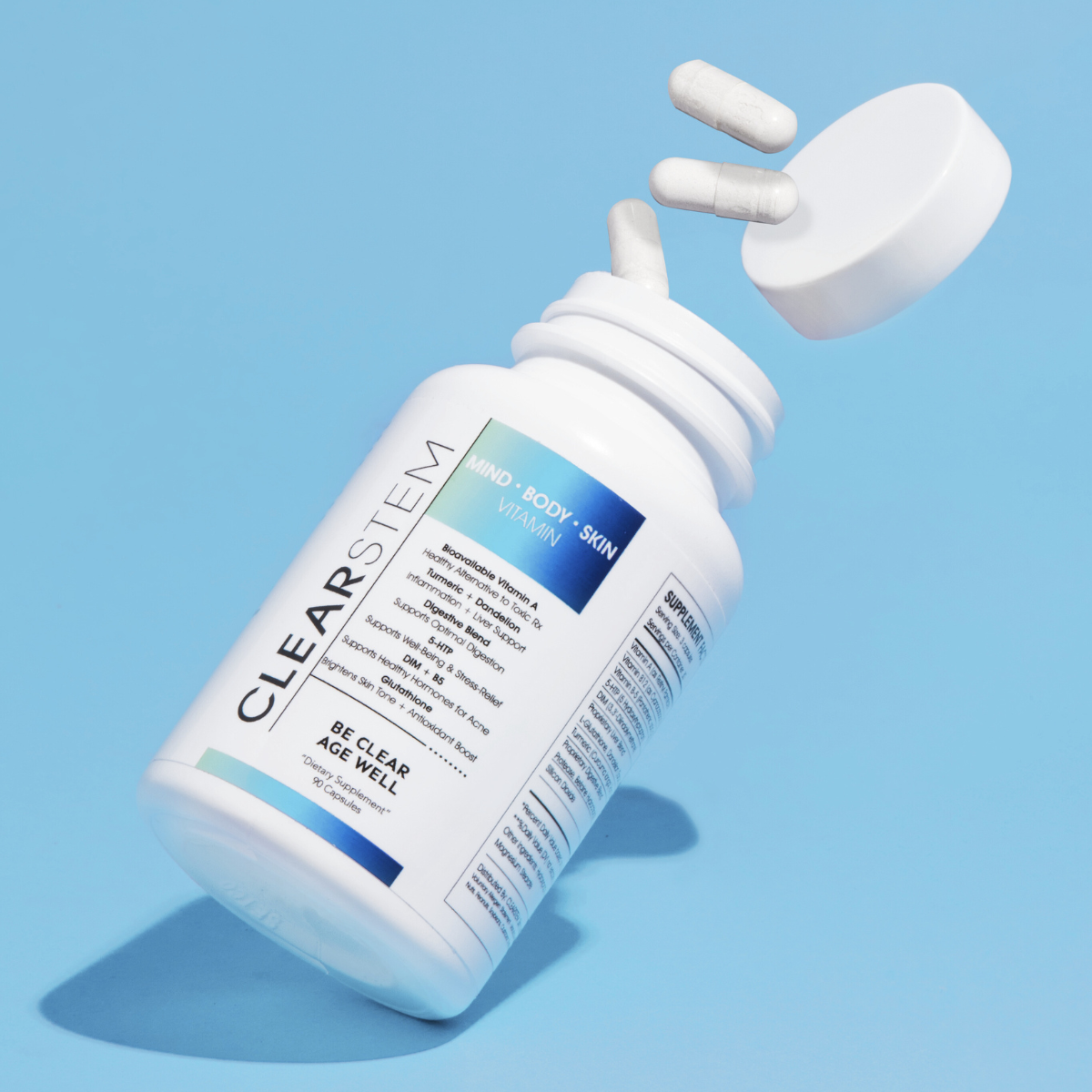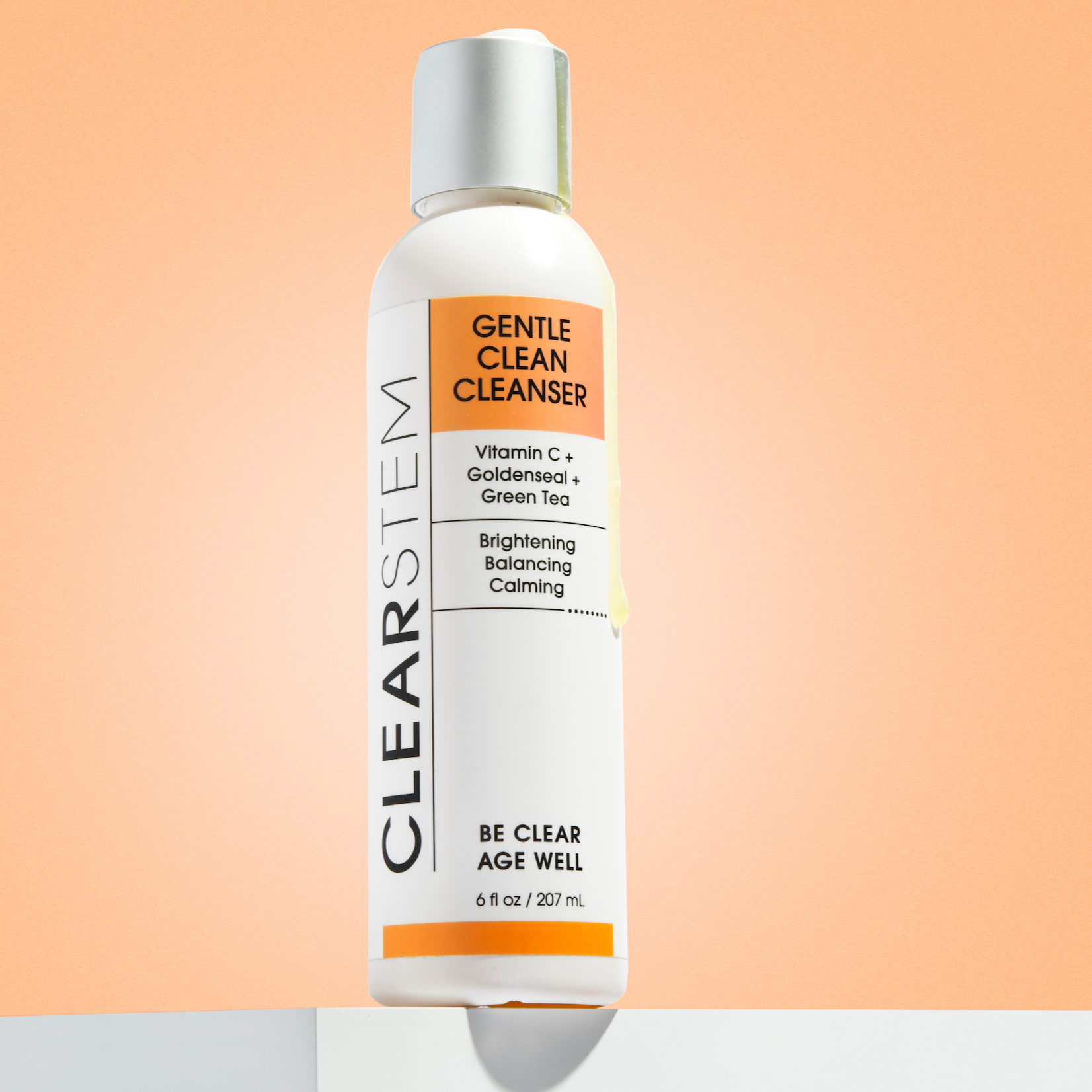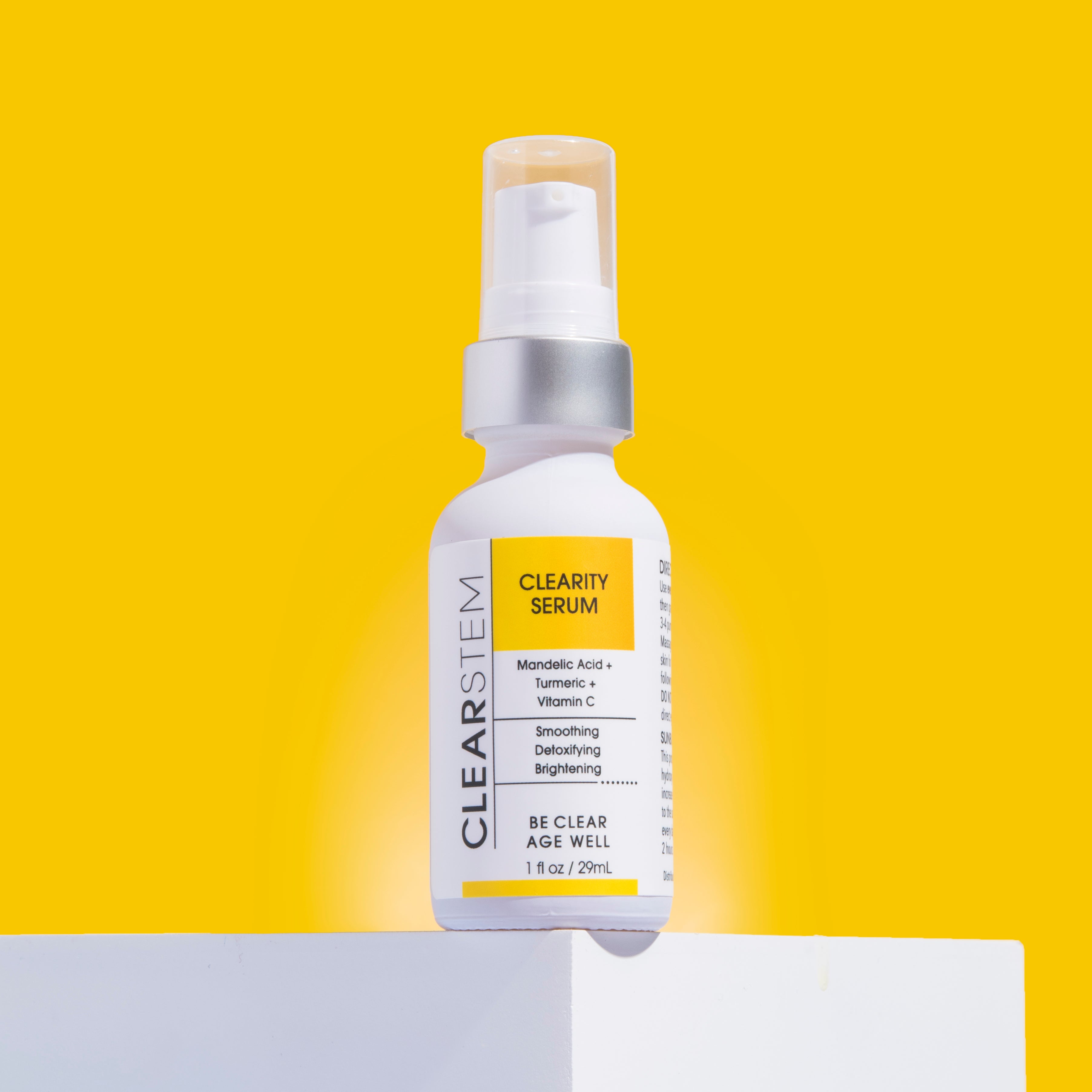For many of us, our skincare routine is something that’s almost sacred. It’s our “me time,” and it allows us to really pamper and nurture ourselves while we either unwind for bed or we get ready to face the day ahead of us.
However, really taking good care of your skin involves knowing which ingredients are working for you and applying them in the optimal way. In fact, a proper skincare regimen is more than just the products you use. It’s also all about the order in which you use them.
Applying a product at the wrong step in your skincare routine can be a huge mistake. Not only can this inadvertently reduce their effectiveness, but it can even harm your skin if you go out of order. (For example, applying a retinol after an alpha-hydroxy acid).
We love to educate on ingredients AND how to apply our products so you can see the immediate change you’re wanting! Because once you apply the products in the correct order, magic happens!
The best part? Doing so is a total breeze once you learn the basic rules.
Ready to learn more about how to layer skincare products for the best results? Let’s go ahead and dive right into it!
Why the Order of Your Skincare Routine Matters
Building a skincare routine can definitely be more than a tiny bit daunting. With all the different recommended products out there, as well as the numerous so-called rules about applying them, it can be far too easy to get overwhelmed by the entire process and want to give up even before you start.
Don’t let that hold you back, though! Building your skincare routine is actually a cinch, and all you need to do is remember exactly why a product is used in a particular order. From there, everything else will fall into place.
Long story short, there’s a reason why you want to make sure you know how to layer your skincare products in a specific order. The longer version, though? Well, it’s because:
- First and foremost, going out of order can impair their efficacy. Case in point: combining retinoids with benzoyl peroxide can cancel each other out. On that note, be careful when using an AHA or a BHA with certain toners and moisturizers, as the alkalinity can make the acid less effective. (1 & 2)
- Secondly, the benefits of said products only work when you use them in the correct order. At the risk of stating the obvious, you’ll want to start with your cleanser, since you don’t want to rinse off all those awesome serums after applying them. Furthermore, you want to layer your occlusive over your moisturizer, as that helps prevent transepidermal water loss (TEWL). (3)
As you can see, the order in which you layer your skincare products definitely matters. Sure, you may not wind up hurting yourself by going out of order, but you’ll still reduce the effectiveness of the products if you do.
So light a candle and turn on some mood music and let’s dive into this together!
The Basics of Any Skincare Routine
Step 1: Think of developing a skincare regimen as an expression of self-care and self-love! You are spending quality time with your largest organ and checking in with yourself while you are doing your skincare, so please remember to love yourself no matter what your skin is up to that week.
Now for the products! A basic skincare routine is best for any newbie, or for those doing a full reset- and you can always add products later on once you’ve got that baseline down. You actually want to make sure you start out with minimal steps, and THEN build. Don’t throw a bunch of products at your face without first making sure you actually need them as that's a waste of your money and energy and could distort the entire process.
Not only can that lead to breakouts or dryness or irritation, but when you add in too many confounding variables, you’ll just get confused and want to scrap the whole thing. That said, the basics of any good skincare routine include just three things:
- A cleanser
- A moisturizer
- An SPF
Obviously you’ll want to make sure that the cleanser is pH balanced and contains only gentle surfactants (NOT sodium laureth or lauryl sulfate), as over-stripping your face can increase oil production and lead to more breakouts. You’ll also want to make sure that your moisturizer contains no iffy stuff in it, either, like pore-clogging ingredients. (5)
Finally, an SPF is a must, since photoaging is one of the biggest triggers for things like fine lines, melasma, and even skin cancer. You do not want to mess around here, because the sun always wins! (6)
Of course, if you’re using a nighttime skincare routine, then you can switch out that SPF with an exfoliant or a corrective serum that’s suited for your skin type and needs.
Okay, now that we’ve got the basics out of the way, let’s go ahead and break down the fun little extras that you can include in your skincare routine. We’re talking serums, creams, acids, and all of those other awesome goodies that can help brighten and improve your skin’s texture and tone.
For instance, if you have hyperpigmentation, adding in a vitamin C serum is a great way to brighten and even it out. If you have fine lines, then some bakuchiol or AHAs can help improve cellular turnover and boost collagen production. The same can be said for a good scrub, too. (7, 8, 9, & 10)
Conversely, BHAs (beta-hydroxy acids) can definitely help if you’re acne-prone and may be a good starting point if you have super sensitive skin. The bottom line here? All of these are fantastic products to incorporate into your skincare routine. (10)
How to Layer Skincare Products
Now that you’ve mastered Basic Skincare 101, your next step here is to build up a more complex routine to meet your skincare goals. By including the right products, you’ll be on your way to brighter, healthier, and more radiant skin in no time flat!
Layering Skincare for Daytime
Your daytime skincare routine is going to be a bit different from your nighttime one. This is because daylight can actually have an effect on how well they work, as well as how sensitive they’re going to make your skin.
After all, if you’re investing in your skin, you definitely want to make sure you’re maximizing the benefits of each product you use by layering your skincare products correctly. There’s no point in only going halfway, especially if you’re looking for the long-term benefits of a multi-step skincare regimen, right? Right.
Step 1. Wash your face.
Reach for a gentle, SLS-free (sodium-laureth sulfate) cleanser. SLS is far too stripping, and it can actually harm your acid mantle. One that uses gentle surfactants like cocamidopropyl betaine will remove all the grime and buildup, but without overdrying your skin. (11)
Step 2. Apply your toner if you have one.
Using a toner can help restore the pH of your skin after washing it, getting it all kinds of ready for the other products you’re going to apply in the next steps.
Step 3. Use your serums.
This is where customization steps in. You have your choice of serums that you can use, but you just want to make sure you’re using the right one for your skin. For instance, if your skin is congested but super duper sensitive, a gentle mandelic acid serum will dissolve all that gunk in your pores without causing extra irritation.
How you use mandelic acid is super critical; it must be applied to bare skin and be allowed to sit alone for 10 minutes or more. After the 10 minutes you can follow with your other serums and moisturizers.
On the other hand, a stem cell serum can be a great fit for you if you’ve got inflammation or hormonal acne. The added saw palmetto has been clinically proven to help balance your hormones, reducing those unwanted breakouts.
Of course, if you’ve got mature skin (or you’re just wanting to be proactive about warding off fine lines before they settle in), then a collagen serum is going to be perfect for you. Brimming with peptides and collagen-derived stem cells, this will both roll back the hands of time and also smooth and brighten your complexion.
Step 4. Gently tap on an eye cream. (Pro Tip: Never tug the skin around the eyes)
The skin around your eyes is incredibly delicate (clocking in at a mere 0.2 millimeters in thickness), so you want to be extremely careful when dabbing on your eye cream. Using an anti-aging eye cream, though, can help reduce dark circles and fine lines in the periorbital area. (12)
Step 5. Apply acne treatments (if necessary).
While using mandelic acid serum can help unclog your pores and prevent future breakouts, you’ll want to go one step further if you have extra acne on your face. In this case, a sulfur spot treatment can help zap those blemishes and send them packing.
Step 6. Smooth on some moisturizer.
Once you’ve completed your other steps, now’s the time to lock in the moisture. Having dry or dehydrated skin can actually age you faster, which is why it’s so important to make sure your skin stays nice and supple. A stem cell moisturizer is just the ticket to help ensure that your skin stays smooth and wrinkle-free. (13)
Step 7. Slather up the SPF.
Last but not least, you don’t want to skimp out on using SPF. We’ve already told you about how detrimental UV light is to your skin, so you want to make certain you have a mineral/physical spf that is zinc or titanium based. Whether you have oily or dry skin, a mineral sunscreen will give you the protection you need without a greasy sheen or pore-clogging ingredients.
Layering Skincare for Nighttime
Now that you’ve got the steps for your daytime skincare routine down pat, let’s go ahead and explore the ones for your nighttime routine. We’re going to breeze right through this, since you’re probably an old pro at the whole layering skincare products business by now, right?
Step 1. Wash and rinse. (Double-cleanse if removing tons of makeup or sweat)
Step 2. Reacquaint yourself with toner.
Step 3. Use those serums once more.
Step 4. Apply your under eye cream.
Step 5. Smear on a rich night cream.
As you can see, it’s pretty similar to your daytime routine, but there’s a few subtle differences. Obviously you won’t need to use SPF (unless you work the night shift!), but now’s the time to use a hydrating face mask overnight. The thicker and more moisturizing it is, the better.
Aaaand voilà, you’re all done. Now, don’t you feel beautiful… and perhaps even a little pampered, too? (Feels good, doesn’t it?)
Takeaway
At the end of the day, your goal is to treat yourself (and your skin) like the valuable and amazing person that you are. Building up a solid skincare routine is just the way to do this, and knowing how to layer skincare products correctly, as it allows you to really make the most of your efforts.
By following the right protocol, you can help ensure you’re reaping all of those fantastic benefits that your products offer. That said, if you have been using a skincare line for more than a few weeks and don’t see an improvement, you may just need to upgrade to a more clinical line.
The cool thing is that applying these products in the correct order doesn’t take any extra time to do, and it’s more than worth it when you start to notice those changes in your skin tone and complexion.
By taking the time to carefully apply your skincare products in the correct order, you’ll know that you’re maximizing their effectiveness and getting the most out of your skincare regimen. And in turn, you can start every single day putting your best face forward – literally!
Sources
Source 1: Benzoyl Peroxide - StatPearls https://www.ncbi.nlm.nih.gov/books/NBK537220/
Source 2: Alpha Hydroxy Acids (FDA) https://www.fda.gov/cosmetics/cosmetic-ingredients/alpha-hydroxy-acids
Source 3: Skin barrier response to occlusion of healthy and irritated skin: differences in trans-epidermal water loss, erythema and stratum corneum lipids https://pubmed.ncbi.nlm.nih.gov/20731690/
Source 4: A Double-Blind, Comparative Clinical Study of Newly Formulated Retinol Serums vs Tretinoin Cream in Escalating Doses: A Method for Rapid Retinization With Minimized Irritation https://pubmed.ncbi.nlm.nih.gov/32574009/
Source 5: The effect of a daily facial cleanser for normal to oily skin on the skin barrier of subjects with acne https://pubmed.ncbi.nlm.nih.gov/16910029/
Source 6: Mechanisms of Photoaging and Cutaneous Photocarcinogenesis, and Photoprotective Strategies with Phytochemicals https://www.ncbi.nlm.nih.gov/pmc/articles/PMC4665475/
Source 7: Vitamin C in dermatology https://www.ncbi.nlm.nih.gov/pmc/articles/PMC3673383/
Source 8: Retinoids: active molecules influencing skin structure formation in cosmetic and dermatological treatments https://www.ncbi.nlm.nih.gov/pmc/articles/PMC6791161/
Source 9: Prospective, randomized, double-blind assessment of topical bakuchiol and retinol for facial photoageing https://pubmed.ncbi.nlm.nih.gov/29947134/
Source 10: Hydroxy Acids, the Most Widely Used Anti-aging Agents https://www.ncbi.nlm.nih.gov/pmc/articles/PMC3941867/
Source 11: Human and Environmental Toxicity of Sodium Lauryl Sulfate (SLS): Evidence for Safe Use in Household Cleaning Products https://www.ncbi.nlm.nih.gov/pmc/articles/PMC4651417/
Source 12: The Tricky Tear Trough https://www.ncbi.nlm.nih.gov/pmc/articles/PMC4587894/
Source 13: Skin aging and dry skin https://pubmed.ncbi.nlm.nih.gov/15492432/









